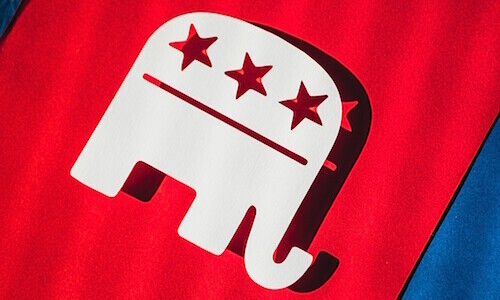How will China’s economy and markets perform under a Trump administration and a Republican Congress? Private banks believe the road ahead will not be smooth, though Beijing may have tools to cushion the impact.
Following Donald Trump’s victory in the US presidential election, the Republican party is poised to secure the majority in Congress. With the red sweep scenario potentially coming to fruition, there are elevated risks to China’s outlook.
How will potential tariffs affect China’s economy? How can China respond? What does it mean for its markets? Private banks take a preview of the path ahead.
Tariff Risk
Trump has previously threatened to raise tariffs on Chinese imports from the current 20 percent to 60 percent. According to a note by UBS’ chief investment office, its base case scenario is for tariffs to gradually reach 40 percent by end-2026 while its downside scenario is an average of more than 60 percent. This could result in a growth reduction of 0.7-1 percent per year or 1.5-1.75 percent per year, respectively.
In addition, Bank of Singapore notes that there is also the possibility that the US will repeal the Permanent Normal Trade Relations with China, though a mitigation plan would be required to address potential consequences.
Stimulus Response
One of the ways that China can respond to protect growth is to deliver stimulus. In the latest, Beijing announced a local government refinancing package of 10 trillion yuan ($1.4 trillion) – an amount that has disappointed investors though some believe that more easing could be in store depending on the situation.
«We think additional stimulus will be rolled out to address domestic and external headwinds in 2025 and beyond, especially once Trump's tariff plans become clearer,» UBS said. «If growth falls well below the 5 percent benchmark or a downside scenario of 60 percent tariffs emerges, an even more forceful policy response would likely be triggered.»
Economic Impact
In UBS’ base case scenario, it expects China’s GDP growth to hit mid-4 percent in 2025. UBP revised its GDP estimate next year to 4.7 percent, up from 4.5 percent. J. Safra Sarasin forecasts that growth will ease to 4.5 percent in 2025 and 4 percent in 2026.
«The main assumption underlying our forecasts is that the Chinese government will do 'just enough' policy support to stabilize near term growth,» J. Safra Sarasin said in a report on its 2025/26 annual outlook.
Investment Outlook
On equities, UBS has revised its MSCI targets down to 67 by June 2025 and 75 by December 2025. J. Safra Sarasin is eyeing the index to reach 72 by mid-2025 and 75 by end-2025. Standard Chartered maintains its base case expectation for the Hang Seng Index at 20,000-22,500 with a bear case range of 18,000 to 20,000.
On bonds, UBS sees minimal impact on investment grade state-owned enterprises and financials, though chemical, semiconductor, hardware and consumer tech sectors could see some impact. StanChart is neutral on Chinese dollar bonds while it expects the onshore China government bond yield curve to stay largely unchanged.
On FX, Bank of Singapore believes that USDCNY could eventually move towards 7.40-7.50 under a red sweep. UBS said it does not expect the People's Bank of China to «preemptively use currency depreciation to help offset Trump's tariff threats» but instead contain a spike by keeping the fixing relatively stable while tolerating a modest depreciation of 5 to 10 percent against the dollar.


























